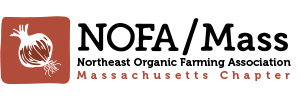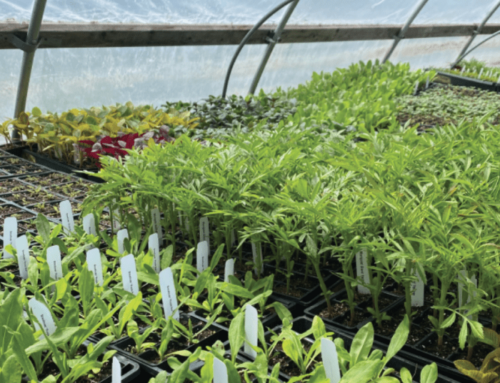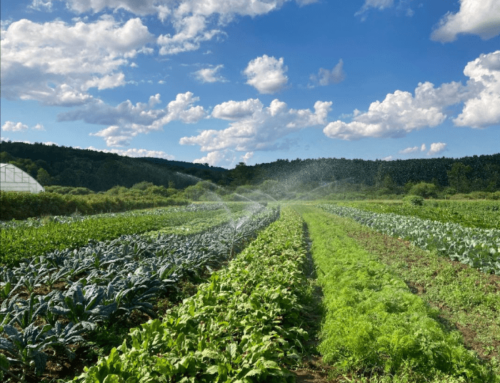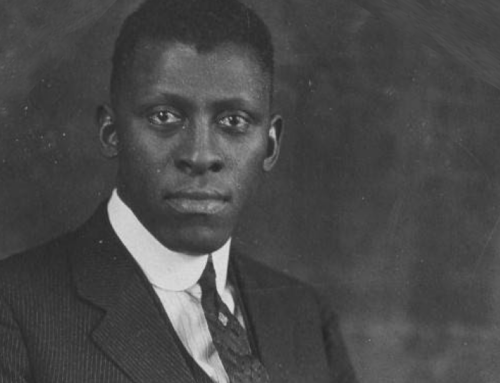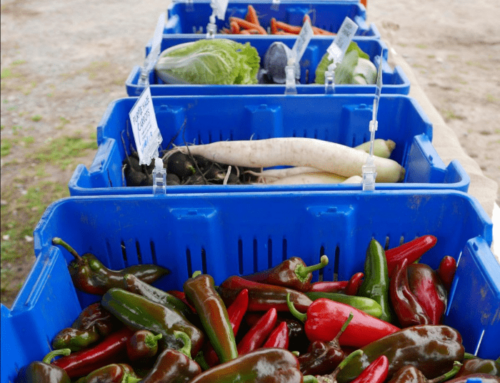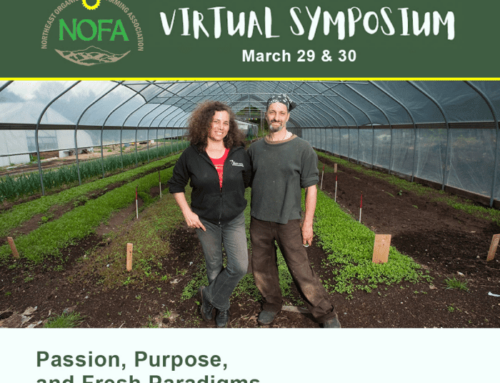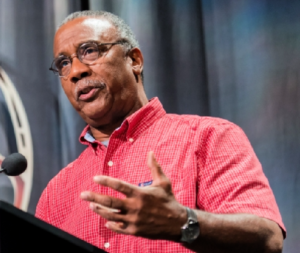
Article by Greg Watson with Introductory Text by Jason Valcourt, NOFA/Mass Winter Conference Coordinator
The flaws in our industrial food system revealed under the stressors of 2020’s intersecting ecological, public health, and racial justice crises were unsurprising to many of us in the NOFA community who farm, garden, and work with natural systems. So many of us came to this work in order to build alternatives to the parts of the modern food system we know are fragile, unjust, and unsustainable.
To learn from this year is to observe both the areas of weakness and the areas of greatest resilience and healthy functioning in our food system under stress. Community-based organizations, farms, and farmer networks dramatically stepped up work and production in 2020 (despite a drought and pandemic-related labor challenges) while large-scale industrial agriculture and distribution chains faltered. To face and adapt for a future in which climate change will likely bring us more disruptions with greater frequency, we should use this glimpse to work toward building improved systems both socio-politically as well as biologically in the new year and beyond.
To address the theme of our 2021 NOFA/Mass Winter Conference, Food Security for the Common Wealth, we have asked our 2021 Winter Conference keynote speaker, Greg Watson, Director of Policy and Systems Design at Schumacher Center for a New Economics to bring his systems-view to the topic of building a more just and resilient food system. In advance of his talk on Friday, January 8th, he has offered us an exclusive look into his present thinking as it relates to our upcoming conference theme.
You can register for the conference online here and get access to over 28 workshops, our two keynotes and more on the weekend of January 8-10, 2021. Huge thanks to Greg Watson and Eric Toensmeier for these contributions to our newsletter. We are looking forward to hosting them at the conference in January. Please enjoy!
Our Local Food System: Planning for a Post-COVID, Climate Changing World
By Greg Watson, Director of Policy and Systems Design, Schumacher Center for a New Economics
These are unsettling times. A confluence of events has delivered us to a place in space and time that I daresay none of us ever imagined. Now that it has arrived, we seem rudderless. Our sense of normalcy has been upended.
Stop asking pundits to predict the future after the coronavirus. It doesn’t exist. No One Knows What’s Going to Happen
So wrote Mark Lilla, professor of humanities at Columbia University in opinion piece that appeared in the April 22nd New York Times.
I have a different take on prognostication. Something I learned from Buckminster Fuller who said:
“The best way to predict the future is to design it.”
The coronavirus pandemic has revealed the flaws in society’s life support infrastructure whose mechanics had previously been at least partially invisible to the general public. This presents us with an opportunity to reimagine and redesign our local/state/regional food systems. That’s exactly what needs to be done. The only question is: who will do it?
And who best to take that on than those committed to reimagining and developing a sustainable, resilient and just food system, right? We did not predict the coronavirus, but long ago we DID anticipate the need to overhaul our food system to make it more responsive to the system “bookends” – the farmers and the consumers. This will take on added importance as the various nodes in the food supply chain respond differently to the uncertain trajectories of coronavirus and climate crisis.
In this new political climate where science is questioned or even scoffed at, it’s imperative that we are as honest and transparent as possible in our assessments of the current state and our prospects for dealing with these twin global threats. We must THINK GLOBALLY AND ACT LOCALLY.
What is the current state of the Massachusetts food system? 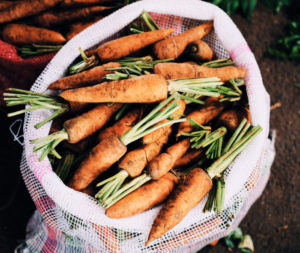
According the latest Agricultural census there are 7,000 farmers in Massachusetts and 500,000 acres of farmland. The population of the commonwealth is 6.893 million. The ratio of farmers to consumers makes it clear that we are dependent on the industrial food system to meet the bulk of our food needs. That’s why it makes sense that our food planning efforts are approached on a regional scale.
Can we meet 50% of those needs by 2060 as one of the scenarios envisioned in the Food Solutions New England report? Even if were possible, New England would still find itself embedded in the larger national and global food systems. As a consequence, our local food planning efforts should, at minimum, monitor relevant developments at the federal and international levels including changing climates and trade agreements.
One thing we know for certain is that the pandemic has reinforced basic economic inequalities, none more defining than access to food. Upwards of 500,000 MA households rely on SNAP for food assistance. The state’s Food Banks have seen more than a 60% increase in those served this past spring and summer.
The pandemic also shed light on another issue that our food system is likely to face: MIGRATION. With COVID–19 we witnessed a significant number of wealthy Bostonians and New Yorkers head for the country to escape the dangers posed by their densely packed city neighborhoods.
Climate-induced sea-level rise could force a migration from coastal communities to inland safety. In essence, a wave of climate refugees. A notion considered far-fetched six months ago, now not so much…
Believe it or not, I see rays of hope trying to pierce through these admittedly dark clouds. Hope has been generated by a mostly spontaneous response to the quarantine by a loosely knit network of local food advocates.
Taking on this responsibility in the face of COVID-19 will require bringing the reality of the current state of our local food system into sharp and focus AND then activating and unleashing the collective wisdom, imagination and ingenuity of those willing and able to contribute to its reinvention.
Working together as a system that operates as a coordinated whole that is greater than the sum of our parts
Collective action is the way to successfully challenge the larger and better-financed forces that can be counted on to propose modifications to the broken system. Enhanced communication and coordination can transform the food network into a diverse and formidable system by demonstrating the relationships connecting a resilient local food sector with equity and climate change concerns and expanding its base of support.
The process or reinvention has already begun as farmers, consumers, organizers and activists have responded not only to the flaws in our current food system but also to the other major challenges facing society square in the eye: Black Lives Matter and Climate Change.
Many have self-organized and self-initiated initiatives designed to fill the functional voids left in the wake in the breakdown of our operating system.
Urban-based gleaners organizing volunteer trips to local farms to harvest food that would otherwise go to waste; Local dairies’ initiative to recover farmers’ raw milk and process it into gallon jugs of milk, yogurt cups, and butter for distribution to food banks as opposed to dumping it; Food co-ops stepping in to take farmers’ otherwise market-less bounty—and concurrently boosting their own inventories; Local processing facilities purchasing the surplus from our farmers and producing prepared meals to feed families in need; City officials working with a group of local minority-owned restaurants to help serve free meals to those in need during the pandemic; Farmers’ Markets out ahead of the curve in establishing operating safety protocols – market managers, vendors and customers willingly and thoughtfully transforming markets into testing grounds.
Rather than being overwhelmed by the multiple challenges, they are discovering the empowering synergy that can emerge when we understand the relationships between food, health, environment and justice. That understanding leads to systems that are greater than the sum of their parts.
How best to approach and talk about ways to improve the various parts of our broken system – including access to land, production, distribution, processing and marketing? That is a critical first step. The ultimate challenge will be to perform what I call civic synergy and shape these into a coherent, synergetic system that works for everyone and the environment.
Solutions exist.
We should take this opportunity to strengthen our networking with other citizen-led efforts committed to meeting our basic needs to generate the levels of synergy equal to the challenge:
Communicate, Collaborate, Cooperate.
We will discover that many good – and indeed viable – solutions were deemed impossible or impractical precisely because they challenged the status quo, and their view of how the world works.
A resilient Massachusetts food system only makes sense when viewed as a whole. When that whole system is allowed to click on all cylinders it is capable of evolving into something that is greater than the sum of its parts.
The principle is called synergy. It is one of Nature’s most ubiquitous practices. It explains how the conditions necessary for life have been sustained for over four billion years primarily depending on the energy of the sun. Does that concept sound familiar?
Unfortunately, our education and economic systems have rendered this principle invisible to the vast majority of the general public. We must develop and articulate a shared vision of the future that accommodates our resilient food system that includes our options for realizing it.
Freedom is in the Claiming.
